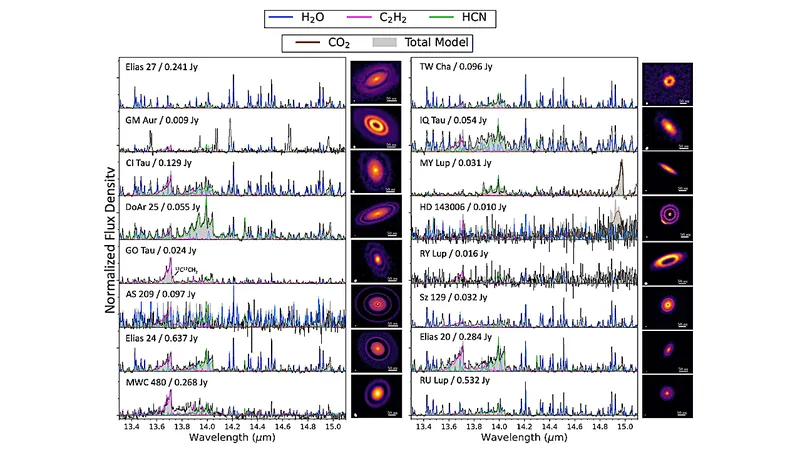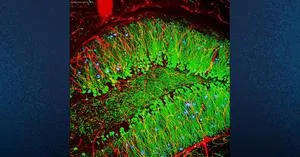
Unlocking Cosmic Secrets: How the JDISC Survey Reveals the Chemical Makeup of Protoplanetary Disks
2025-05-13
Author: Daniel
A Glimpse into the Cosmic Nursery
Scientists have uncovered significant insights into protoplanetary disks—stellar nurseries where new planets are born—thanks to groundbreaking mid-infrared spectroscopy from the JWST Disk Infrared Spectral Chemistry Survey (JDISCS). This innovative study meticulously analyzes 31 distinct disks, providing a vivid chemical inventory of gas within just a few astronomical units (au), particularly where planets are often detected around older stars.
Diving into Diverse Disk Categories
The JDISCS sample showcases a rich variety of disk types, ranging from intermediate mass disks to transition disks characterized by large dust cavities. This diversity also includes solar-mass disks exhibiting both weak and strong water emissions, as well as low-mass stars. The detailed MIRI spectra have illuminated emission lines from crucial gases such as water (H2O), hydroxyl (OH), carbon monoxide (CO), and more, broadening our understanding of their elemental makeup.
Unprecedented Detection Rates
With impressive signal-to-noise ratios of approximately 200-450, the study has revealed that emissions from water, hydroxyl, and carbon monoxide are nearly ubiquitous among low-mass stars. Compared to previous observations made by Spitzer-IRS, the detection rates of all identified molecules have spiked, indicating a more complex and dynamic chemistry in these alien environments.
Understanding Emission Lines and Molecular Mass
Employing slab model fits to the molecular emissions, revelations suggest that emissions from compounds like C2H2 and HCN predominantly arise from warmer regions within the disks, while CO2 forms in cooler zones. This provides crucial insights: the ratios of luminosity between HCN and cold H2O imply a more effective transfer mechanism of water through icy pebbles, particularly in smooth disks devoid of large dust structures.
Connecting the Dots Between Chemistry and Disk Evolution
Notably, the luminosities linked to molecular emissions are closely tied to mass accretion rates and infrared spectral indices—patterns strikingly similar to earlier findings from Spitzer-IRS surveys. This correlation proves that multi-wavelength observation is key in unraveling inner disk chemistry's relationship with outer disk properties and the characteristics of the host stars.
A Bright Future for Stellar Research
As more Class II systems are studied in the forthcoming JWST observation cycles, the potential for new discoveries continues to expand. The results from JDISCS not only enhance our understanding of protoplanetary disk chemistry but also pave the way for future explorations into the processes that fuel planet formation.






 Brasil (PT)
Brasil (PT)
 Canada (EN)
Canada (EN)
 Chile (ES)
Chile (ES)
 Česko (CS)
Česko (CS)
 대한민국 (KO)
대한민국 (KO)
 España (ES)
España (ES)
 France (FR)
France (FR)
 Hong Kong (EN)
Hong Kong (EN)
 Italia (IT)
Italia (IT)
 日本 (JA)
日本 (JA)
 Magyarország (HU)
Magyarország (HU)
 Norge (NO)
Norge (NO)
 Polska (PL)
Polska (PL)
 Schweiz (DE)
Schweiz (DE)
 Singapore (EN)
Singapore (EN)
 Sverige (SV)
Sverige (SV)
 Suomi (FI)
Suomi (FI)
 Türkiye (TR)
Türkiye (TR)
 الإمارات العربية المتحدة (AR)
الإمارات العربية المتحدة (AR)